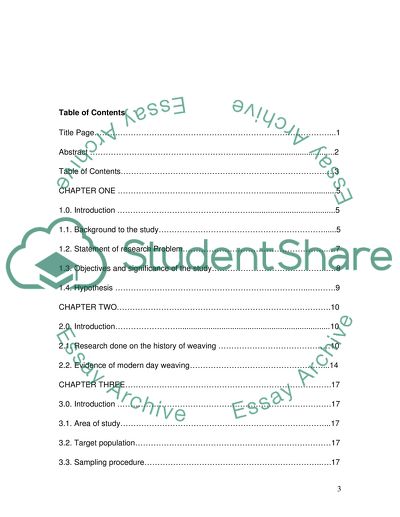Cite this document
(“The History of Weaving Coursework Example | Topics and Well Written Essays - 5000 words”, n.d.)
The History of Weaving Coursework Example | Topics and Well Written Essays - 5000 words. Retrieved from https://studentshare.org/technology/1505043-the-history-of-weaving
The History of Weaving Coursework Example | Topics and Well Written Essays - 5000 words. Retrieved from https://studentshare.org/technology/1505043-the-history-of-weaving
(The History of Weaving Coursework Example | Topics and Well Written Essays - 5000 Words)
The History of Weaving Coursework Example | Topics and Well Written Essays - 5000 Words. https://studentshare.org/technology/1505043-the-history-of-weaving.
The History of Weaving Coursework Example | Topics and Well Written Essays - 5000 Words. https://studentshare.org/technology/1505043-the-history-of-weaving.
“The History of Weaving Coursework Example | Topics and Well Written Essays - 5000 Words”, n.d. https://studentshare.org/technology/1505043-the-history-of-weaving.


